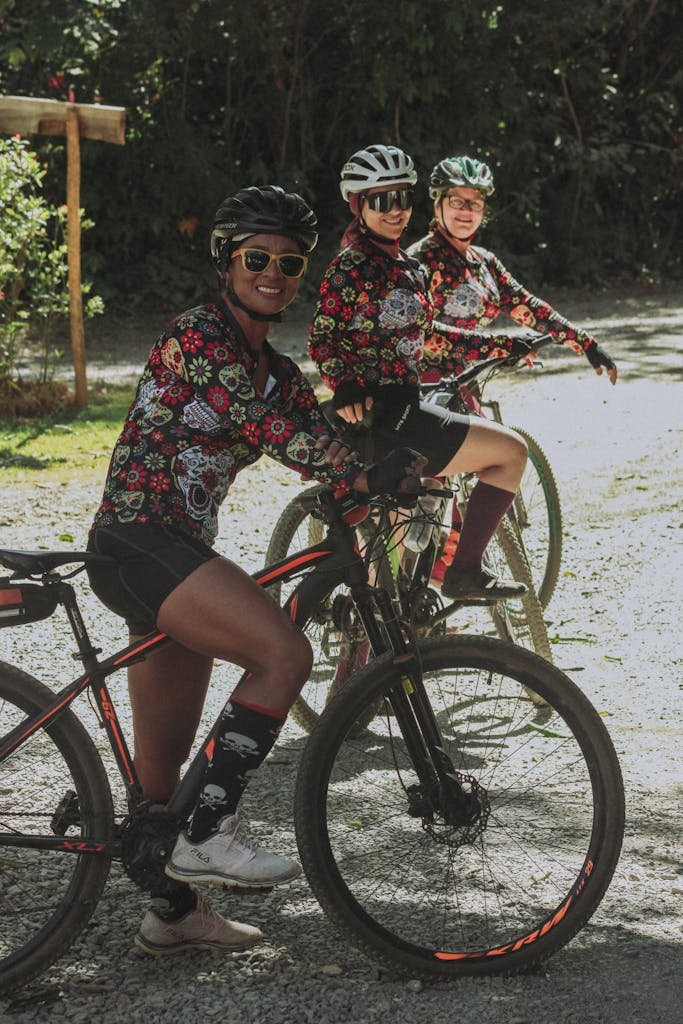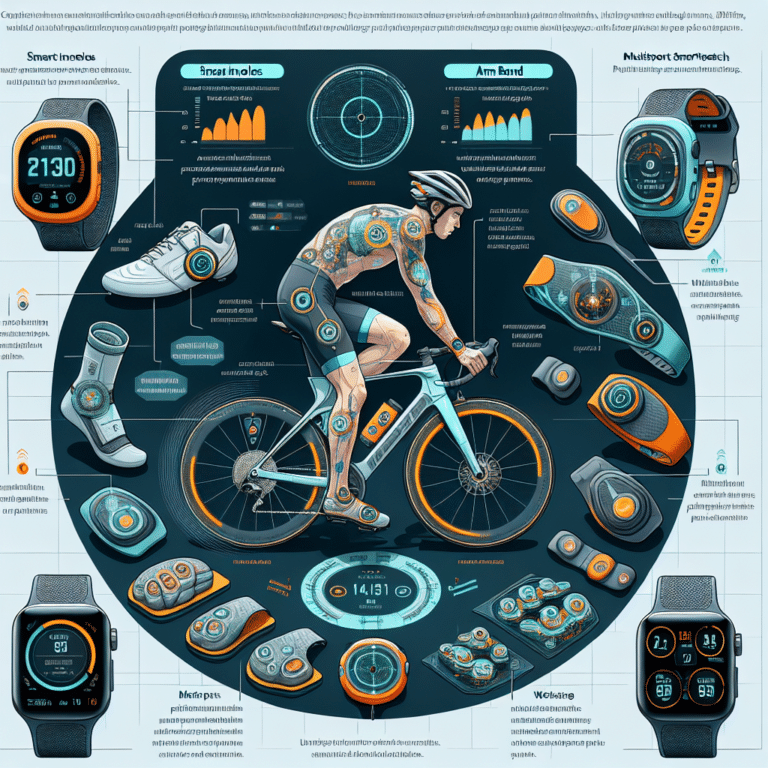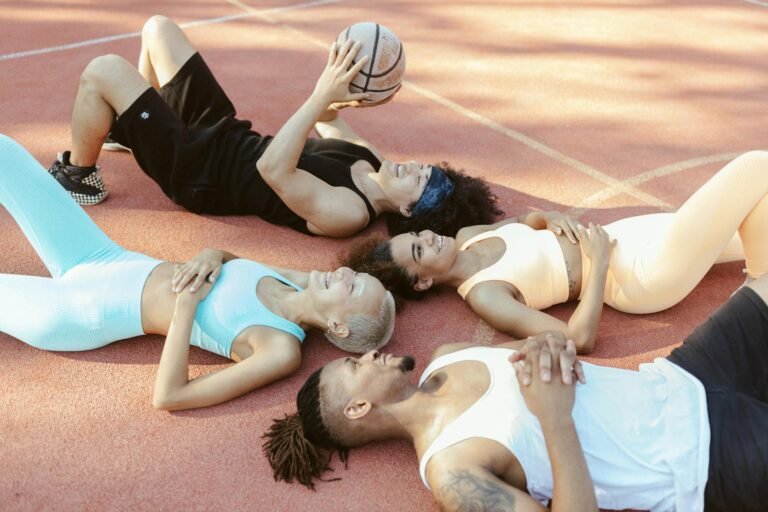Bike Fitting at Home: How to Adjust Your Bike for Maximum Comfort and Efficiency 2025
Imagine pedaling for miles without that nagging back pain or knee discomfort. That’s what bike fitting at home allow you to do. Sounds like a cyclist’s dream, right? The secret isn’t in buying a new bike—it’s in perfecting your bike fit!
Did you know that an improper bike fit can reduce your cycling efficiency by up to 30% and increase your risk of injury? This comprehensive guide will walk you through everything you need to know about getting the perfect bike fit, right in your own garage.
Understanding Bike Fitting at Home Fundamentals
I used to think bike fit was just about feeling comfortable. Not even close. A proper bike fit is the difference between suffering through rides and absolutely crushing them.
Bike Biomechanics: More Than Just Sitting on a Saddle
Bike fitting is a complex dance between your body’s mechanics and the bicycle’s geometry. It’s about creating a perfect harmony that maximizes efficiency while minimizing injury risk. Every millimeter matters – from saddle height to handlebar reach.
Critical Measurement Points
The core fitting points are like a cyclist’s blueprint:
- Saddle height
- Saddle fore/aft position
- Handlebar reach and drop
- Cleat / Shoe positioning
- Stem length
Each measurement interacts with your unique body mechanics. What works for a pro cyclist might be terrible for your specific physiology.

Performance Impact is Real
An improper bike fit isn’t just uncomfortable – it’s performance-limiting. It can lead to knee pain and lower back strain. After a professional fitting, those issues can drastically improve. Your power output can increase by nearly 15%, and your endurance will improve dramatically.
Red Flags of a Bad Bike Setup
Watch for these warning signs:
- Persistent knee pain
- Lower back discomfort
- Numbness in hands or feet
- Shoulder tension
- Reduced power output
- Uneven pedaling sensation
Essential Bike Fitting at Home Tools
You don’t need a professional bike lab to start. Basic tools include:
- Measuring tape
- Plumb bob
- Level
- Allen key set
- Smartphone for taking body angle measurements
While home fitting helps, nothing beats a professional bike fit session. Think of it as an investment in your cycling performance and body’s long-term health.
Remember, your bike should feel like an extension of your body – not a wrestling match.
Measuring and Adjusting Bike Geometry: Precision Fitting Decoded
When I first started cycling, I thought bike geometry was some mysterious science reserved for professional mechanics. Years of riding and trial-and-error taught me it’s a precise but learnable skill that can transform your entire cycling experience.
Body Measurement: Your Cycling Blueprint
Accurate body measurements are the foundation of bike fitting at home.
What to measure:
- Inseam length (most critical measurement)
- Torso length
- Arm length
- Flexibility range
- Overall height and weight
Stand barefoot, heels against a wall, and use a hardcover book pressed against your crotch to measure true inseam accurately.

Saddle Height: The Performance Cornerstone
Saddle height impacts everything – power output, comfort, and injury prevention. The classic method is when the pedal is at its lowest point, your leg should have a 25-30 degree bend. You can also use a goniometer app on your smartphone for precise angle measurement.
Handlebar Positioning Strategy
Handlebar reach isn’t one-size-fits-all. Your upper body should form a comfortable 45-degree angle when riding. Too stretched? Back pain. Too compressed? Shoulder strain. Minor adjustments of 5-10mm can make massive differences.
Cleat Alignment: Precision Matters
Cleat positioning impacts knee tracking and power transfer. Aim to:
- Align cleats with the ball of your foot
- Use a plumb bob for precise vertical alignment
- Check for natural foot angle
- Measure and mark consistent positioning
Everyday Measurement Tools
You don’t need expensive equipment. My go-to toolkit includes:
- Measuring tape
- Smartphone with angle measurement apps
- Level
- Allen key set
- Carpenter’s square
- Smartphone camera for documentation
Document your measurements. Your body changes, and having a baseline helps track your cycling evolution.
Bike Fit Techniques for Different Cycling Disciplines
I used to think a bike was just a bike. After years of riding I’ve learned that each cycling discipline demands its own unique approach to bike fitting. What works perfectly for a road bike feels like torture on a mountain trail.
Road Bike: Precision Performance Machine
Road bike fitting is all about aerodynamics and efficiency. Your primary goal should be to minimize wind resistance while maximizing power transfer. Typical road bike positioning involves:
- Lower handlebar position
- More aggressive forward lean
- Narrower handlebar width
- Precise saddle height for maximum pedaling efficiency
The sweet spot is a 45-degree upper body angle that balances comfort and aerodynamics. Millimeters matter here – a 5mm adjustment can transform your entire riding experience.
Mountain Bike: Rugged Terrain Considerations
Mountain bike fitting is a completely different animal. You need:
- More upright positioning for better visibility
- Slightly lower saddle to allow quick body movement
- Wider handlebar for increased control
- More suspension-friendly positioning
The key is maintaining balance and flexibility. Unlike road bikes, mountain bike geometry prioritizes maneuverability over pure speed.
Hybrid and Commuter Bikes: Comfort Meets Functionality
These bikes are the Multi-Tool of cycling. Fitting strategies include:
- More upright riding position
- Wider, more comfortable saddles
- Higher handlebar placement
- Flexible positioning for urban environments
Comfort is king for commuter bikes. You’re not racing – you’re navigating city streets and potentially carrying cargo.
Performance vs. Comfort: The Eternal Trade-off
Every bike fit involves balancing performance and comfort. Road cyclists might sacrifice some comfort for speed. Touring cyclists prioritize long-term comfort. Mountain bikers need a balance between control and efficiency.

Discipline-Specific Nuances
Each cycling style demands unique considerations:
- Trial bikes: Extreme forward positioning
- Touring bikes: Maximum comfort for long rides
- Gravel bikes: Versatile positioning between road and mountain geometries
Your body changes. What worked last year might need adjustment this year. Regular reassessment is key.
My Comprehensive Bike Fitting Guide: From DIY to Pro-Level Precision
Technology Meets Biomechanics
Modern bike fitting isn’t just about measuring – it’s about comprehensive body analysis. Smartphone apps and digital tools have revolutionized home bike fitting. I’ved use apps that can:
- Capture body angle measurements
- Track flexibility ranges
- Provide real-time biomechanical feedback
- Compare your positioning against professional standards
DIY Measurement Techniques
Professional-level measurements are now accessible to everyone. My toolkit includes:
- Smartphone with angle measurement apps
- Carpenter’s level
- Measuring tape
- Plumb bob
- Goniometer for precise angle tracking
Biomechanical Assessment Methods
Understanding your body’s unique mechanics is crucial. I developed a systematic approach:
- Flexibility screening
- Range of motion tests
- Documenting natural body angles
- Tracking how body positions change during rides
Common Fitting Mistakes to Avoid
Cyclists often make these critical errors:
- Ignoring personal flexibility
- Copying professional bike setups
- Neglecting body changes over time
- Overlooking subtle discomfort signals
Diagnosing Bike Fit-Related Pain
Pain isn’t normal. Each discomfort tells a story:
- Knee pain: Often indicates incorrect saddle height
- Lower back strain: Typically means improper reach
- Hand numbness: Usually signals incorrect handlebar positioning
- Shoulder tension: Suggests stem length issues
Incremental Adjustment Strategies
Small, methodical changes beat massive overhauls:
- Adjust 2-5mm at a time
- Document each change
- Allow time to adapt
- Track performance and comfort metrics
When to Seek Professional Help
Some situations demand expert intervention:
- Persistent, unexplained pain
- Major body changes
- Transitioning between cycling disciplines
- Performance plateaus
Quick Fixes for Common Discomforts
Immediate relief techniques:
- Saddle repositioning
- Cleat angle adjustments
- Handlebar tape modification
- Stem length tweaks
Your bike should feel like an extension of your body. Listen to its (and your) signals.
Final Thoughts
Bike fitting isn’t rocket science—it’s about understanding your body and your bike. With patience, practice, and these techniques, you’ll transform your riding experience, prevent injuries, and unlock your true cycling potential!
Don’t settle for an uncomfortable ride! Start your bike fit journey today and feel the difference in your next cycling adventure.
Engage, Endure and Enjoy!
Find More Resources on Bicycles
- Smart Bike Trainers: 2024 Best Picks with Features and Benefits
- Mountain Biking for Beginners: Essential Guide to Hit the Trails in 2024
- 3 Best Mountain Bikes of 2024: Complete Buyer’s Guide & Reviews
- Bicycle Chain Maintenance: 2025 How to Clean and Lube Guide
- Essential Mountain Bike Gear: A Complete Guide for 2024







